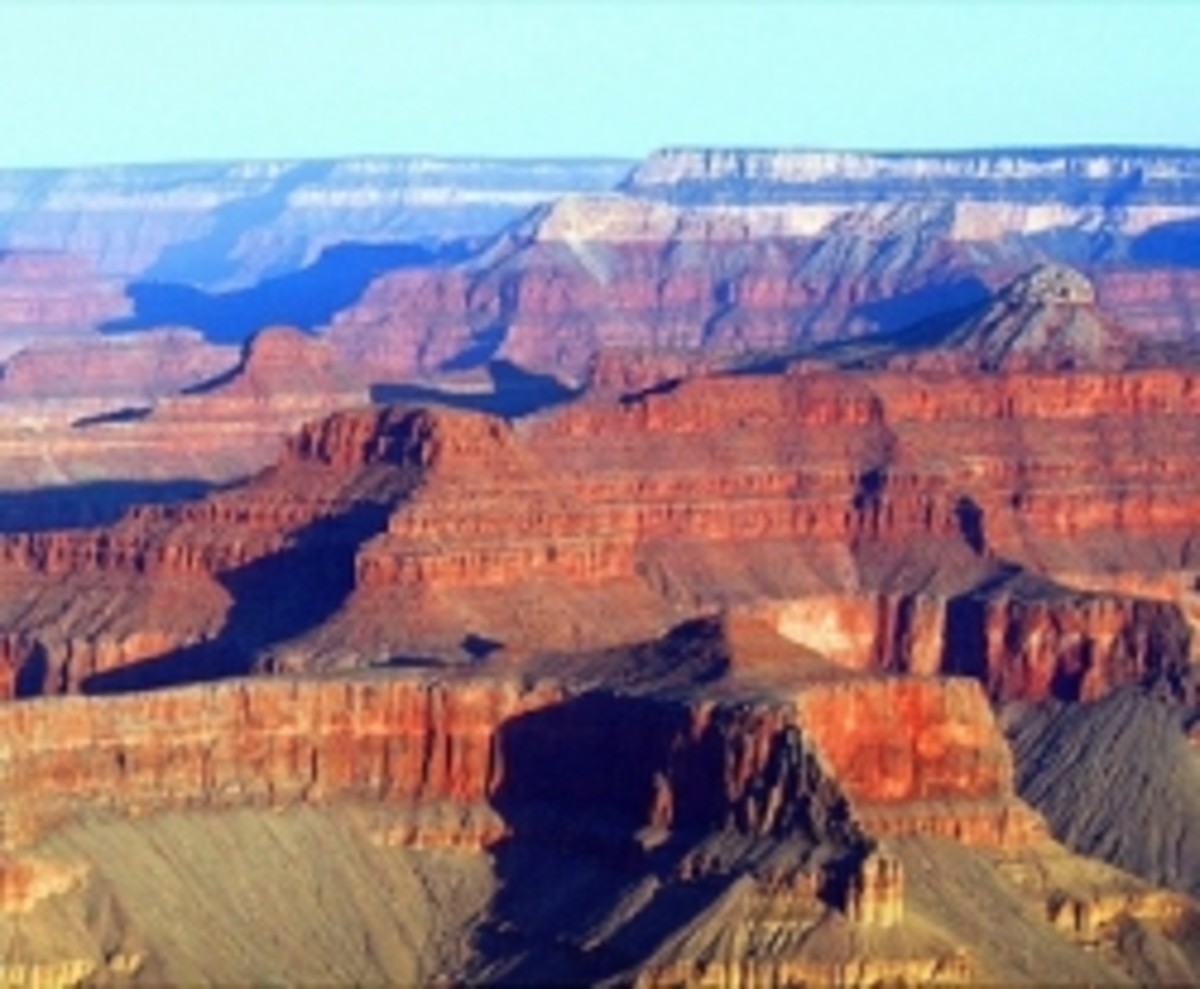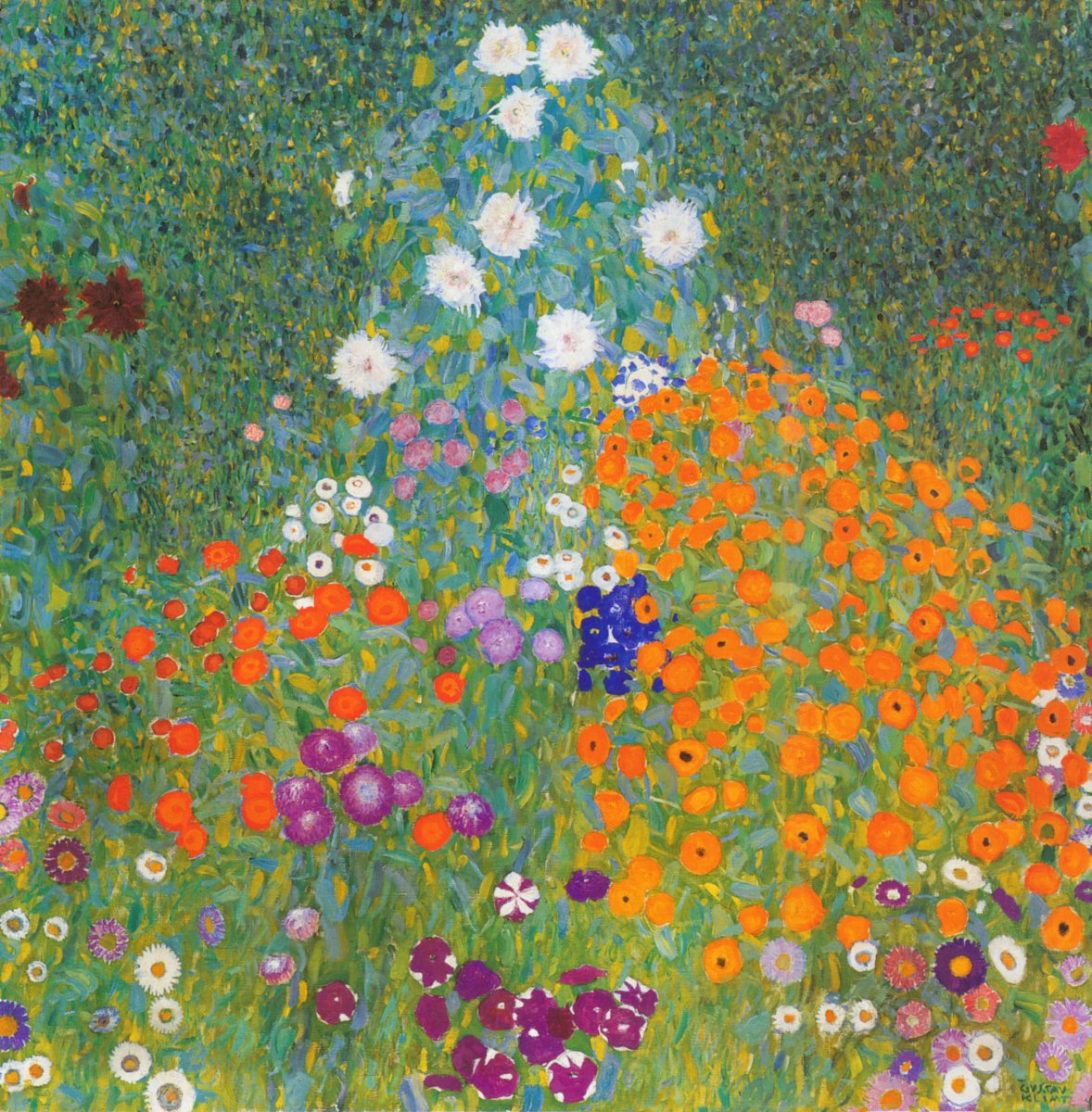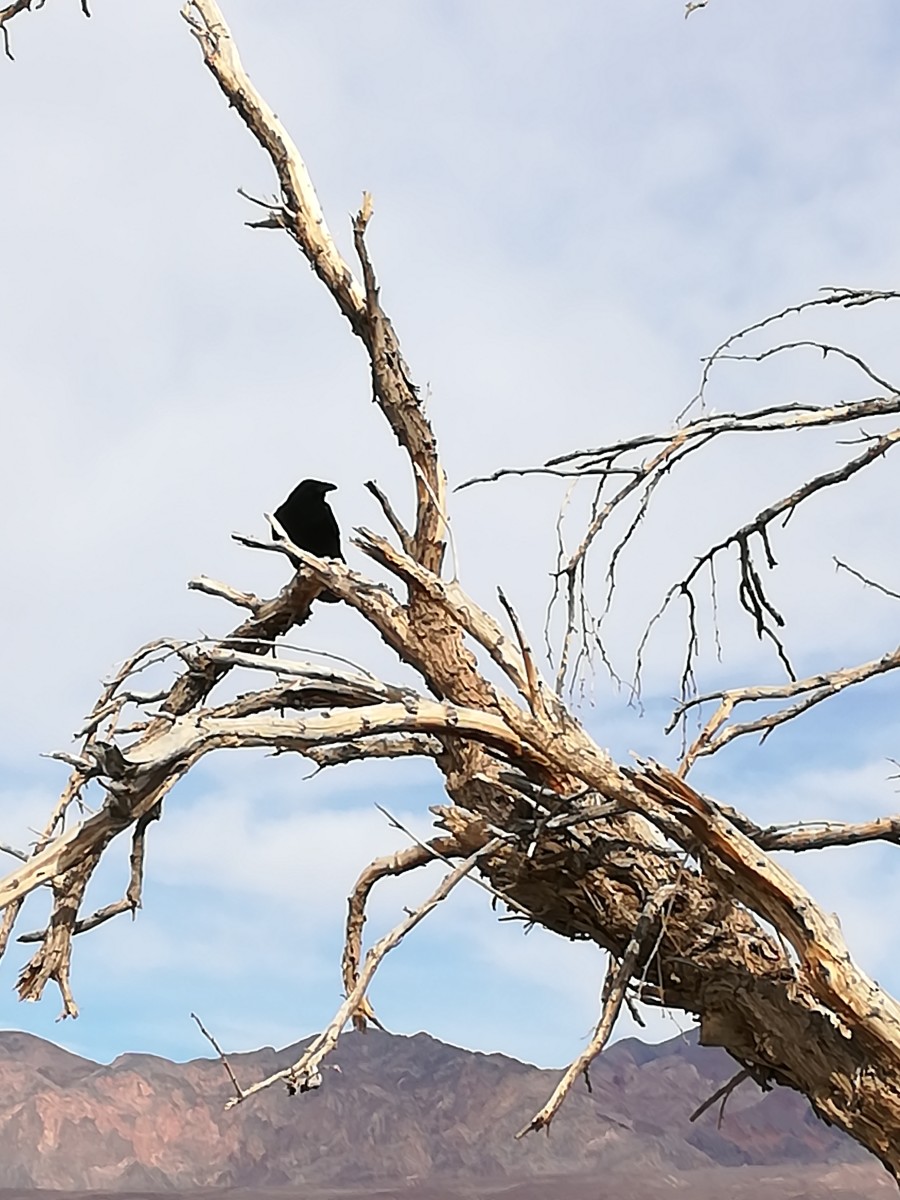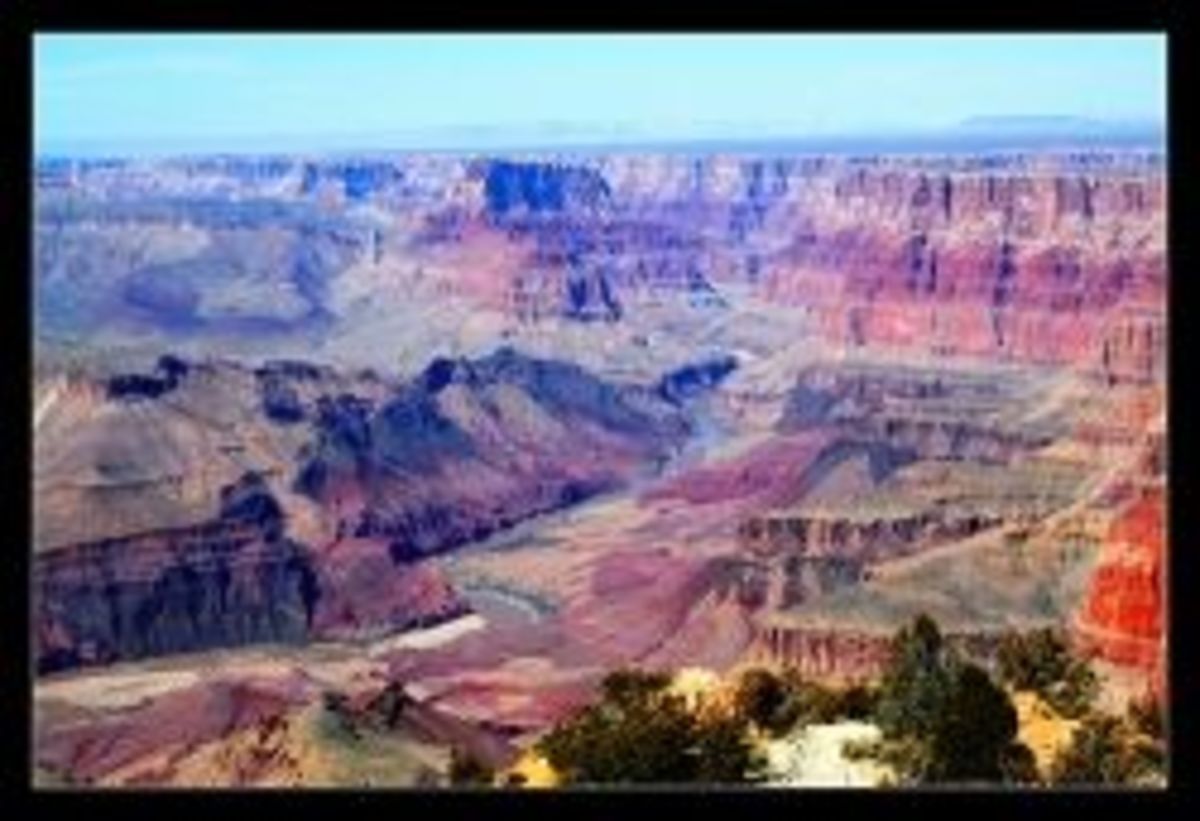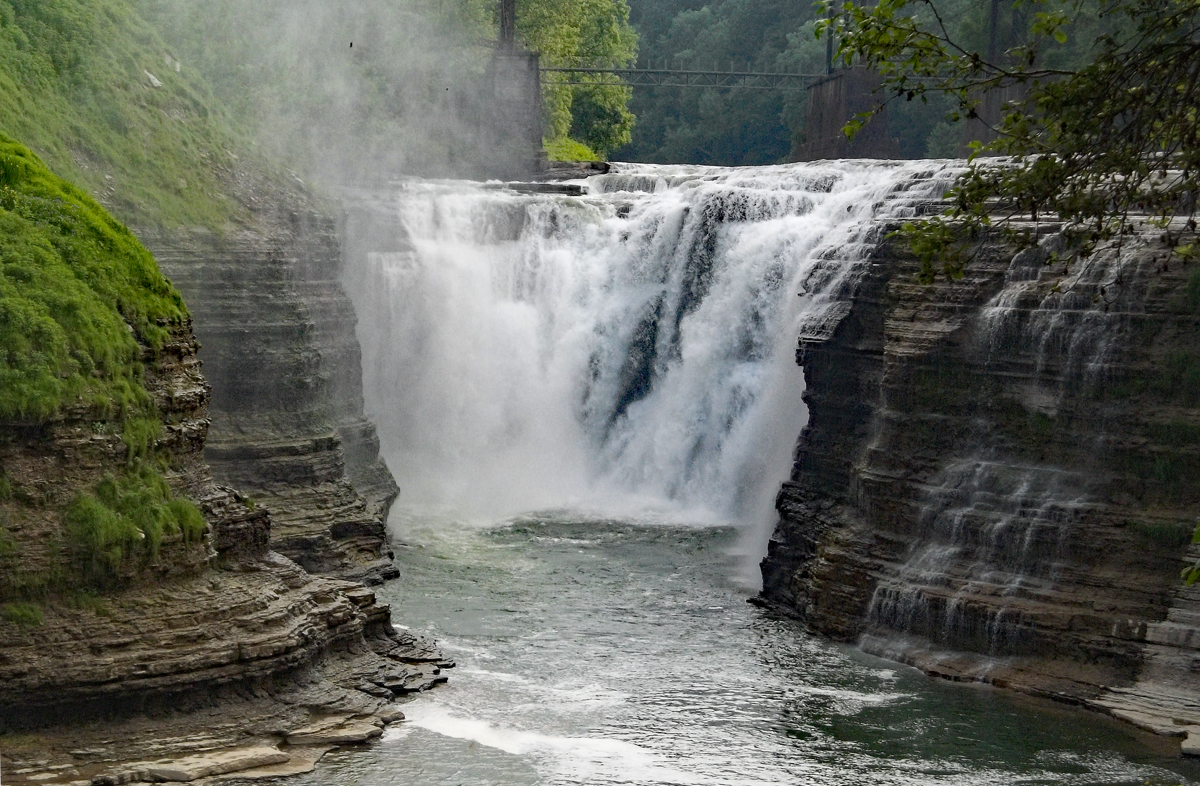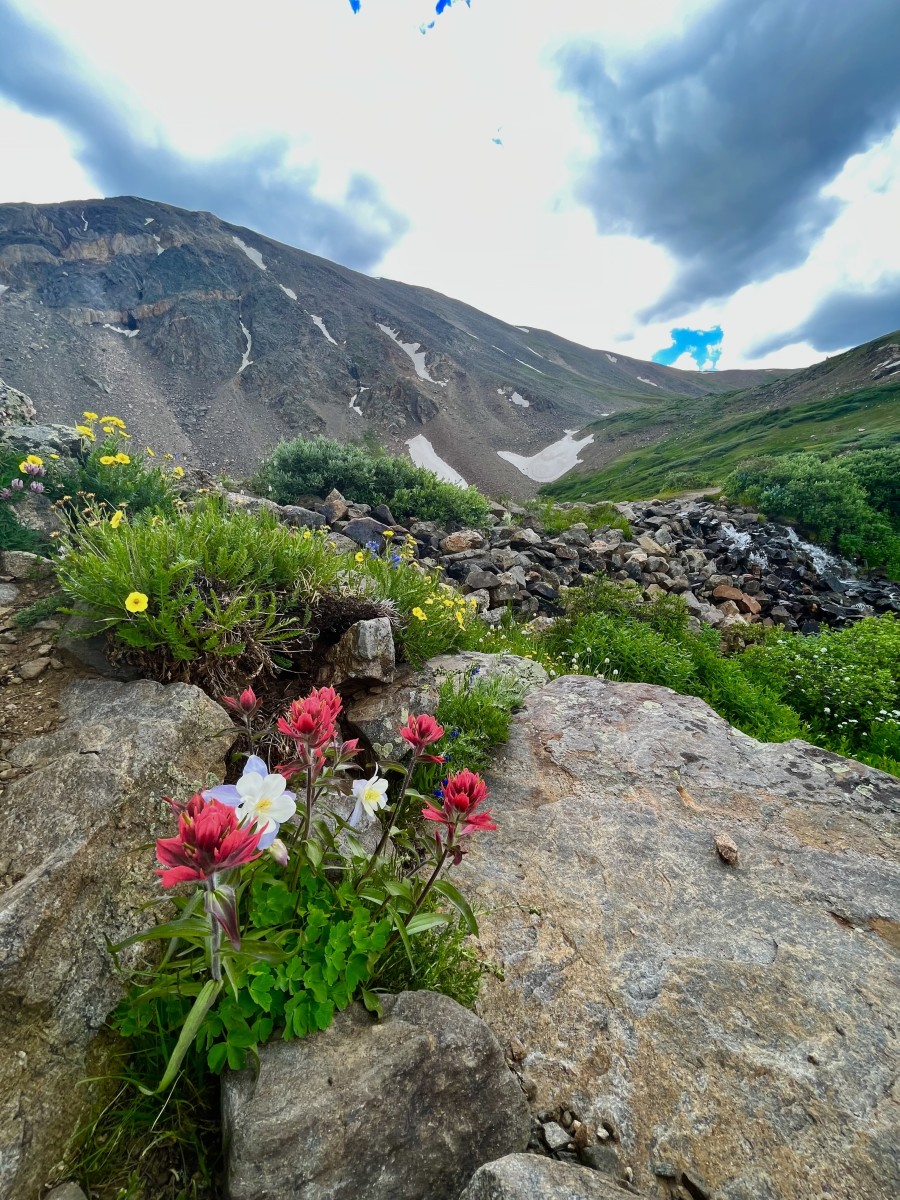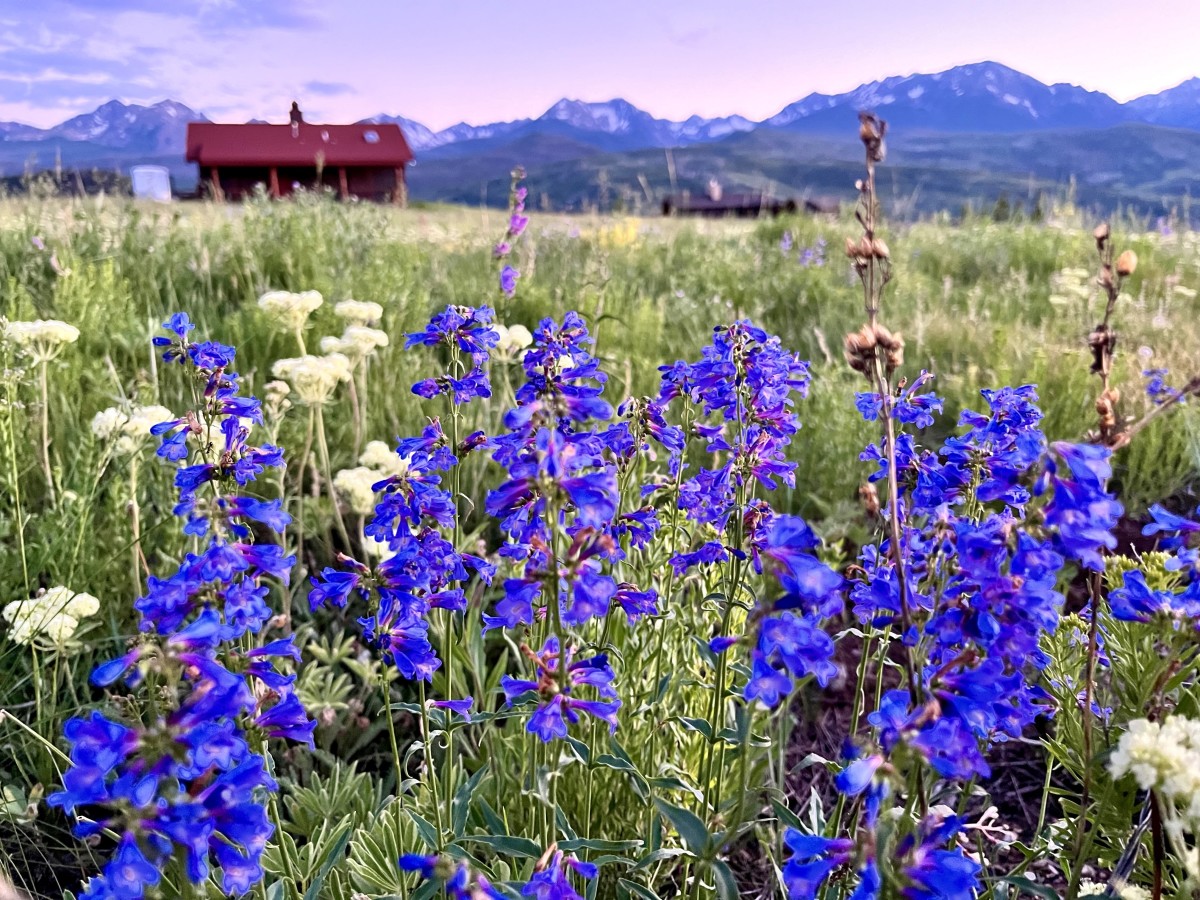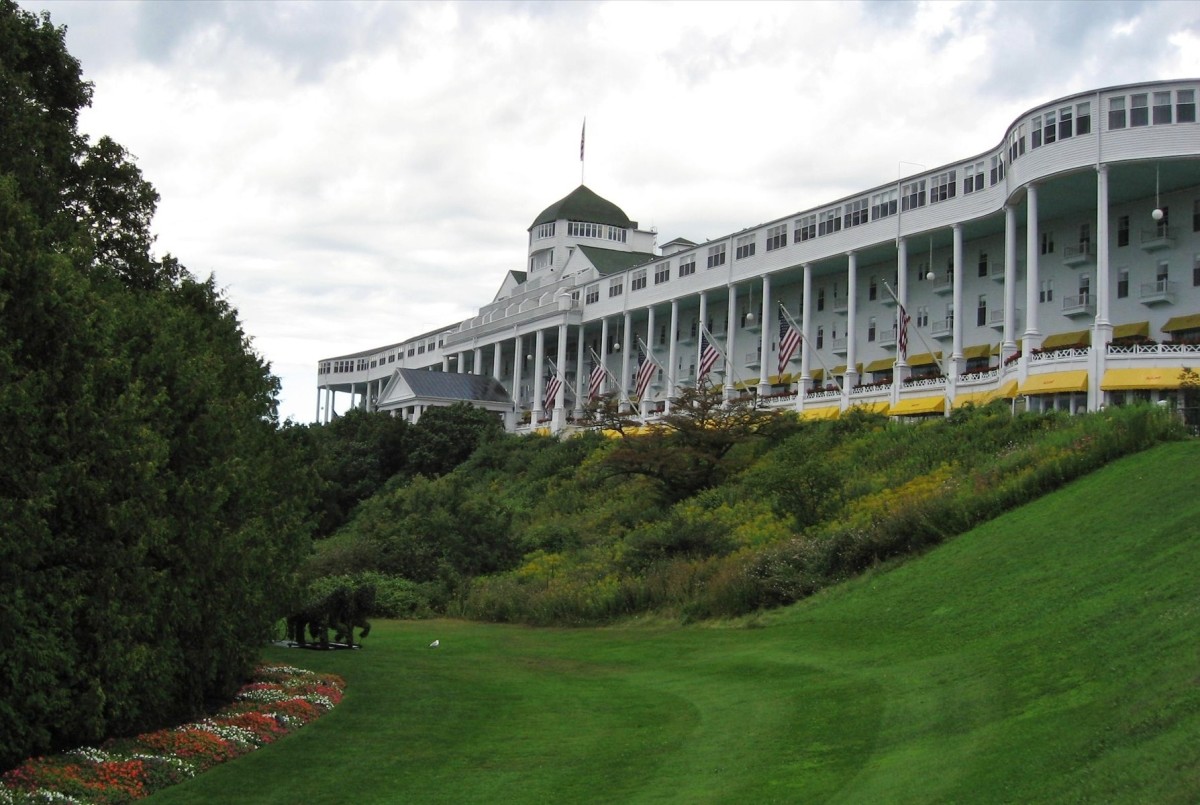Antelope Canyon - Abstract Landscapes
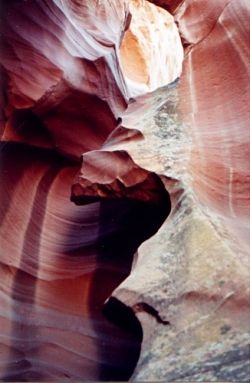
Ever hear of an abstract landscape?
Personally, I have wanted to go to Antelope Canyon for many, many years. I am particularly fond of abstracts, and this place just seemed different. Antelope Canyon is a slot canyon. This is a canyon produced by rushing monsoon rains, which carve out a very narrow passage in the rocks. The rocks are made of sandstone, but I have never observed any fossils in them. For this and other reasons, dating the "age" of the canyon would be impossible. It is very likely that it didn't take more than a couple thousand years, at most, to carve it out. Rushing water is that destructive. The canyon constantly changes, as new flood waters rush through, sometimes leaving more sand on the floor, sometimes taking more away. Because the canyon is so narrow, it is relatively rare for sunlight to reach the floor of the canyon directly. But it bounces off the walls, and changes their color constantly.
This is the entrance of Upper Antelope Canyon. The Canyon is a tribal park belonging to the Dineh nation (Navajos). It is located near Page, Arizona, and Lake Powell, on the Arizona-Utah border. Getting into Upper Antelope Canyon requires that you go on a tour. There are several companies that offer tours, and you pay for the tour plus the permit to enter the lands. The water that makes the canyon moves above ground for awhile, and then enters another slot canyon called Lower Antelope Canyon. To enter Lower Antelope Canyon, you buy a permit directly from the Dineh. You can go alone, or accompanied by one of the people on duty that day. The reason for the requirement to buy a tour for the upper canyon is because several people were killed when they went into the canyon just before it was hit by monsoon flood waters, although this happened in the lower canyon. Hiking the upper canyon is easy; the lower canyon involves a lot of stairs and is more strenuous.
You can see my photos of Antelope Canyon plus some other stuff by going here: Antelope Canyon.
This photo is the entrance to the upper canyon.
(Photo credits Pat Goltz)
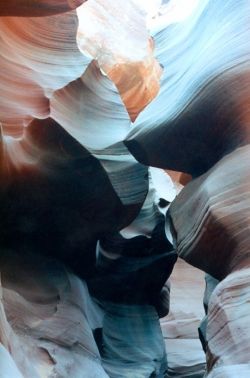
Plan your trip
The time of year and time of day are very important. The canyon has no rays throughout most of the year and most of the day. The best rays occur in the summer months, an hour or so before and after noon, with the time in between. Of course, planning to go during the monsoon season means you may not get in, if there are storms in the area. A storm eleven miles away can persuade the tour guide not to take anyone in that day. This narrows the optimum times to May and June, because the monsoons start in early July some years, and last through September. Choose a tour that starts around eleven, for best results. You can usually stay for a couple of hours. First, the tour guide will take you through and point out various features, and after that, you are free to wander.
The photo to the right shows what the canyon looks like toward the middle of the day; notice the colors are lighter. When you go in earlier or later, it may be quite dark, and this may make picture taking more difficult. Some people carry tripods. I have learned that I can get good pictures without one if it is bright enough. Tripods are cumbersome and impede your ability to move around. They also take longer to set up, to get the scene you want.
You can see a larger version of this photo here: Antelope Colors n Contours.
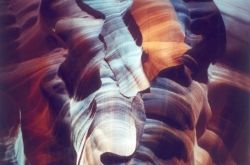
Abstract
This is an example of the kind of abstract images you can make in Antelope Canyon. The color has been enhanced a little. It is common to find photos for sale with the colors enhanced in this manner, in the stores in Page.
You can see a larger version of this photo here: Antelope Canyon 6.
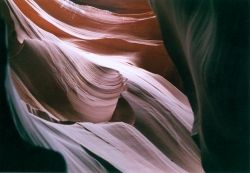
Example of visual poetry in the canyon
I call this visual poetry because the lines follow each other, and move in a certain direction. This photo was taken in Lower Antelope Canyon. It was a dull day, so the colors weren't as good. Choosing a bright day helps and one has to take into account how the clouds will form during the day, since they form in the afternoon.
You can see a larger version of this photo here: The Water Rushed Down.
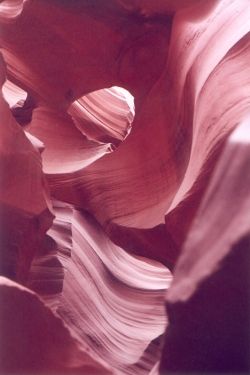
The Window
I don't actually know what this formation is called. But I call it The Window. It's the only place I know of where there is a hole completely surrounded by rock. This is from Lower Antelope Canyon.
You can see a larger version of this photo here: The Window.

Dineh Guitarist
One of the things people like to do is take musical instruments into the canyon, to play them. I keep forgetting to take my recorder and my guitar. But the experience is often a spiritually moving one.
On this particular day, one of the young men who was on duty at the lower canyon was going through the canyon with his guitar, and I asked him to play for me. He was very good. I suggested he should consider a career in music! He also let me take his picture.
You can see a larger version of this image here: Dineh Guitarist.
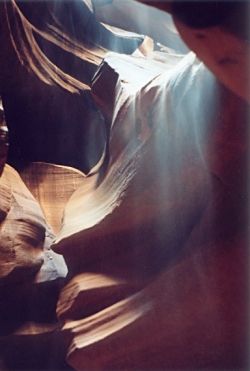
Sand Falls
We've all heard of waterfalls, but have you ever heard of sand falls?
On this particular day, it was VERY windy, and there was a lot of dust. The sand had gathered on some of the more horizontal ledges, and the wind was blowing it off. This caused what I call a sand falls.
Unfortunately, the sand and dust in the air wrecked two of my camera bodies! But it was worth it, as you shall see shortly.
To see a larger version of this photo, go here: Sand Falls.
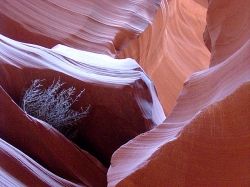
The Survivor
This is the only plant I have ever seen in Antelope Canyon. It is in the lower canyon. I can't tell if it is alive or dead, but my guess is that it is alive, because it is still clinging to the rock, and I have seen many other photos of it taken over a period of time. I also have no idea what species it is, unfortunately.
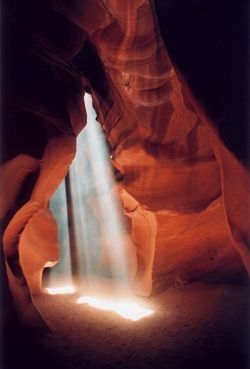
Let There Be Light
I tell people that everything we have and are given are gifts from God. Light, without which pictures would not be possible, beautiful scenes, the ability and desire to take pictures, all are gifts.
This was especially a gift because I almost didn't even get this picture! I had planned my trip carefully so that I would be in the canyon at the right time of day, the right time of the year, and I had been through the canyon. When the rays of the sun started to hit the canyon floor, it seems as if I got there just as they were fading. So I went back to the entrance, and there was a group of people standing there, and someone had set up a tripod. So I turned around to see what he was photographing, and this is what I saw.
I have won numerous awards with this photo. I am thankful to God for this wonderful surprise, and to each person who has given me an award. The name comes from the Genesis account of how God created the universe and the earth. This photo is for sale here: Let There Be Light.
Books on Amazon about Antelope Canyon
Few and Far Between
Books on Amazon
It's unbelievable! There are almost NO books on Amazon that even MENTION Antelope Canyon. Depressing and disappointing! I found this one:
Canyon Wilderness of the Southwest, mini edition
This is really the only one I found that has promise.
Purple Star
Thank you very much, to Squidoo, for the Purple Star!
Please leave your feedback and critiques.

